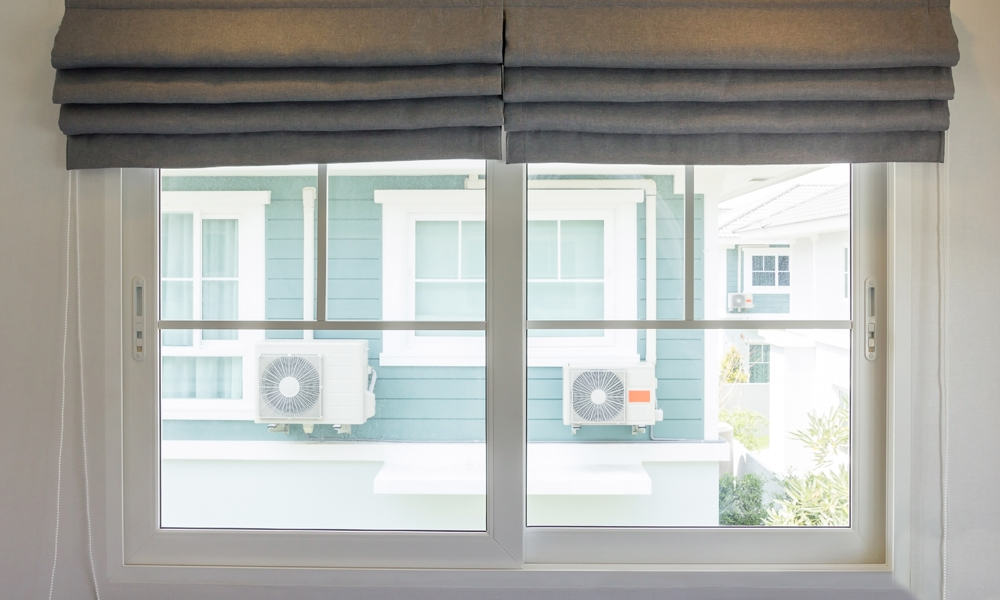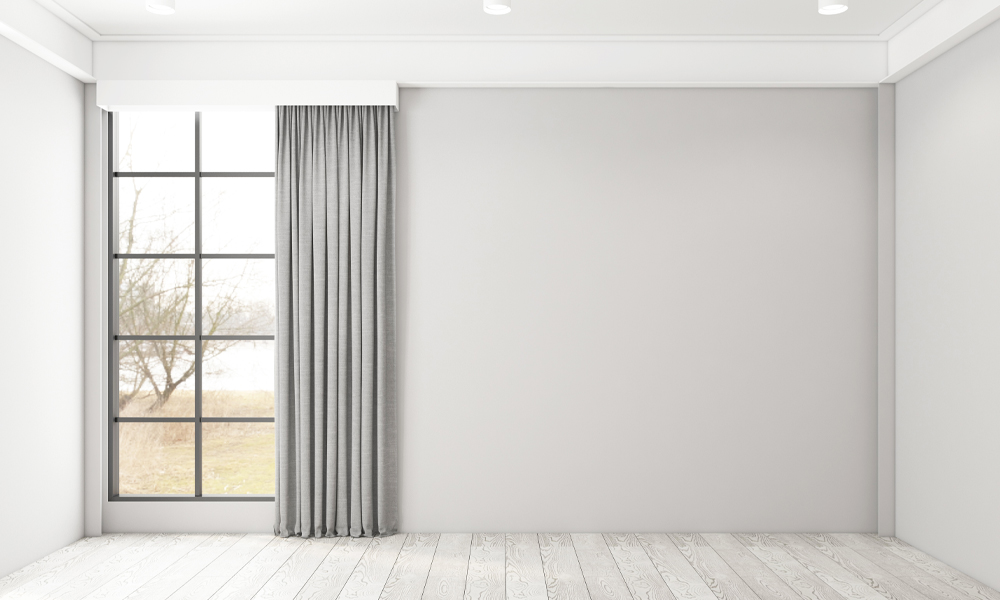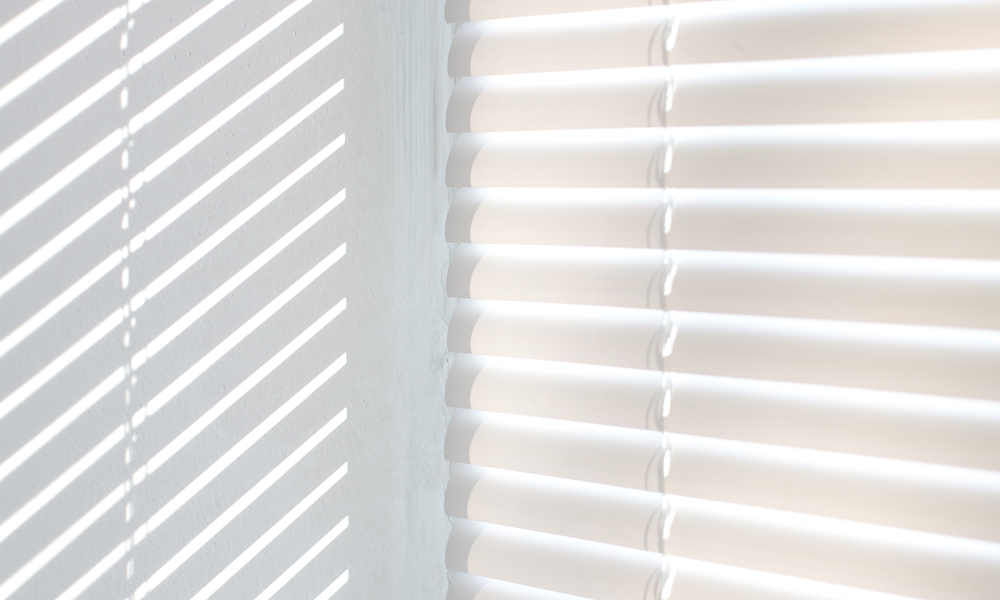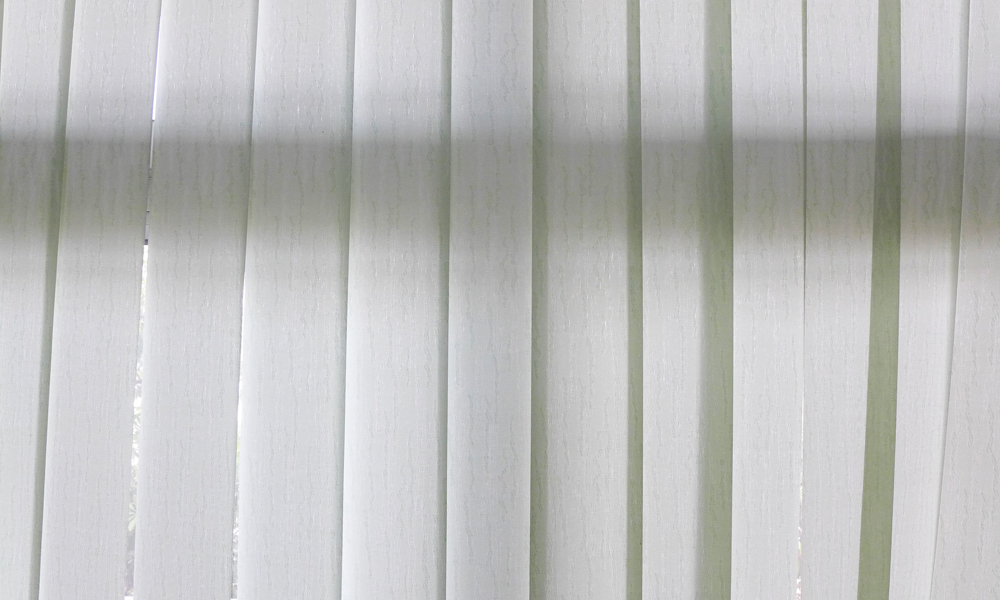
Grey blinds and white walls – yes, no, or maybe? The grey-and-white combination is one of the most popular colour pairings in modern interiors, seen in countless homes, offices, and commercial spaces. The question is not whether grey blinds work with white walls (they absolutely do) – it’s about overcoming the hesitation some people feel toward this subtle, understated look. Is it striking enough? Is it too subdued, too safe, or perhaps lacking personality? And will it stand the test of time?
In this article, we explore the deeper reasons behind the popularity of grey blinds with white walls, the psychology of colour neutrality, and how this classic combination continues to inspire modern design.
Grey Blinds with White Walls
It turns out that choosing grey represents a kind of psychological hurdle for many people. The perception is that by choosing grey, you’re sitting on the fence — not making a bold design statement, but rather taking the middle ground. Grey has long been associated with neutrality, subtlety, and discretion. In fact, the concept of “the grey man” describes someone who intentionally dresses and behaves in a way that avoids unwanted attention:
“The intentional act of dressing and behaving in an inconspicuous manner, in order to avoid any unwanted attention from strangers or authorities… to blend in, to be visible and yet invisible at the same time.”
Source: Urban Dictionary

So, the argument goes: if you choose grey, you’re not really making a choice. But we beg to differ.
There’s far more depth to grey than many realise. Rather than viewing its neutrality as a weakness, we see it as a unique strength. Grey blinds, especially when paired with white walls, can produce a calm, balanced, and highly adaptable aesthetic. Let’s explore the reasons why this combination works so effectively – and why it deserves more recognition.
How Grey and White Work Together
Grey and white work together harmoniously because they both sit within the achromatic palette, meaning they lack strong colour saturation. Unlike bold or bright hues, greys and whites rely on lightness, tone, and contrast rather than colour value to create interest. Even when subtle tints are added – such as warm greys with beige undertones or cool greys with hints of blue – they still maintain that intrinsic relationship with white.
This makes grey and white an exceptionally forgiving and versatile pairing. They provide a clean, contemporary backdrop that complements a wide range of furniture styles, materials, and decorative accents. From minimalist Scandinavian interiors to industrial loft spaces and sleek office environments, this pairing offers a timeless sense of sophistication.

As greys become darker or more intense, they move further away from white – yet their visual connection remains strong. This makes them perfect for white-walled rooms. While white walls tend to work with nearly any blind colour, the real advantage of incorporating grey blinds lies in their neutral balance. Grey tones blend effortlessly with most furnishings and surface finishes, making it easier to decorate, update, and maintain a cohesive look over time.
Moreover, the flexibility of grey means you can adjust the atmosphere of a room simply by shifting tone. Light greys create an airy, tranquil vibe, while darker greys add depth, drama, and a sense of grounded stability. Either way, grey blinds complement white walls beautifully without overpowering the space.
So yes, grey and white work exceptionally well together – but that still leaves the big question…
So, Should We Choose Grey & White?
In interior design, there’s a time to be bold and a time to be subtle. Sometimes, it’s about making a statement; other times, it’s about creating a harmonious, understated environment that allows other features to shine. Choosing grey blinds is not a sign of indecision – it’s a conscious decision to prioritise balance, longevity, and flexibility.
True confidence in design isn’t about always choosing the loudest colour in the room. It’s about selecting what best serves your vision. Grey blinds achieve precisely that: they support your space, rather than dominating it.
Functional interior colour choices should both look good and work well. They should align with your furnishings, lighting, and long-term goals. Grey and white combinations tend to have far greater staying power than more daring, trend-driven schemes. They also allow for easy updates – swap out a rug, throw in colourful cushions or artwork, and your entire space can evolve without the need for a full redesign.

But isn’t Grey and White.. Boring?
But isn’t grey and white… boring?
Emphatically, no.
Within this combination lies a vast range of creative possibilities. The interplay between light and dark greys introduces contrast, depth, and even drama. Textures also play a crucial role: think of matte versus glossy finishes, linen versus metallic, or woven versus smooth fabrics. By layering tones and materials, you can achieve a space that feels anything but flat.
Add natural timber, black accents, or metallic hardware, and suddenly your grey-and-white palette takes on warmth, elegance, or even a futuristic edge. Far from bland, this combination acts as a flexible stage on which your personal style can truly shine.
The Grey Edge
What makes grey truly powerful is its ability to bridge contrasts. It sits perfectly between black and white, incorporating aspects of both. This makes it remarkably easy to integrate with other colours – from muted pastels to bold statement tones. Grey acts as a connector, helping diverse design elements work together in harmony.
Instead of viewing grey’s neutrality as “safe,” think of it as strategically adaptable. It’s a strength that simplifies your design process and future-proofs your interior choices.
Grey & White – Are They ‘In’ Right Now?
Absolutely. While design trends fluctuate, timeless palettes like grey and white never truly go out of fashion. They may fade into the background when bold colours dominate the spotlight, but they always return – refreshed and reinterpreted for each new decade. The enduring appeal of grey and white lies in their elegance, restraint, and versatility.
Whether you’re designing a calm, spa-like bathroom, a bright modern kitchen, or a minimalist office, the grey-and-white combination remains one of the most reliable – and beautiful – foundations you can choose.
